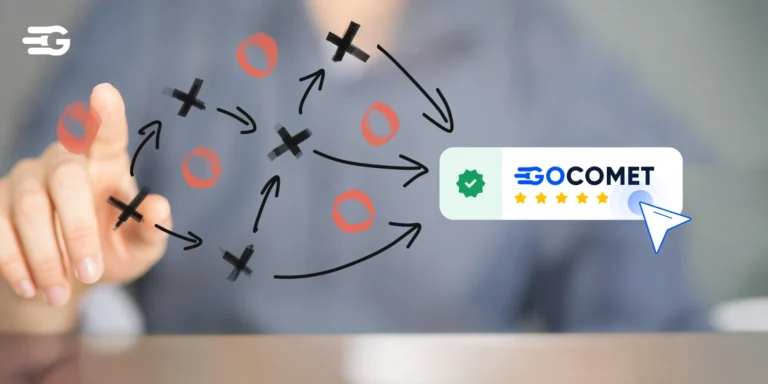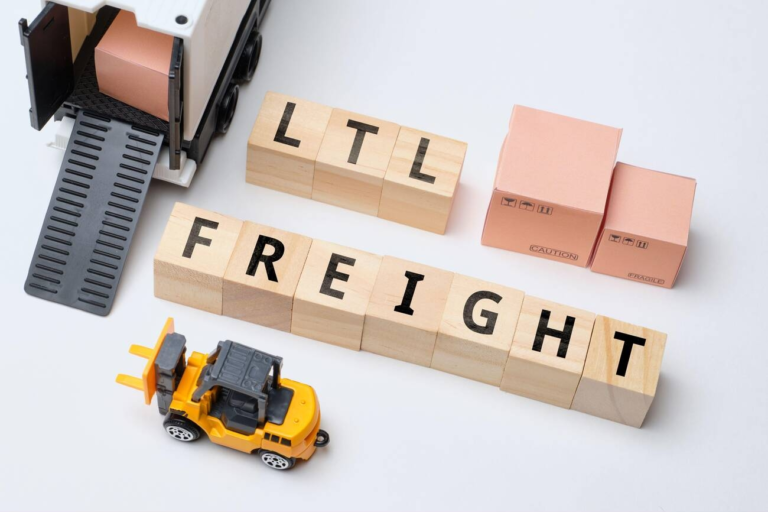Vendor Relationship Management: A Simple Guide for Busy Owners
Look, dealing with vendors is messy. One day your carrier is great, the next they’re late on three shipments. Your warehouse partner says they can handle your volume, then suddenly they’re overwhelmed during the busy season. This stuff happens constantly, and it costs money every time.
Vendor relationship management is basically about getting ahead of these problems instead of always playing catch-up. If you’re tired of vendor headaches eating into your profits, keep reading – we’re going to break down what good vendor management actually looks like and how to set it up without drowning in paperwork.
Vendor Relationship Management, Quick Definition
Vendor relationship management is basically how you deal with all the companies that help run your supply chain: your suppliers, carriers, warehouses, whoever. Most businesses just wing it until something breaks, then scramble to fix it.
But here’s the thing: when you actually manage these relationships properly, you’re not constantly putting out fires. You know what to expect from each vendor, they know what you need, and problems get sorted before they mess up your deliveries.
It’s pretty straightforward stuff. Regular check-ins, clear expectations, tracking who’s doing their job and who isn’t.
Why Vendor Relationship Management Matters for Your Supply Chain
Here’s what happens when you actually manage vendor relationships instead of just hoping everything works out:
- It Saves You Money (And Headaches)
When you manage vendor relationships well, you’re not just negotiating better rates. You’re avoiding the expensive surprises that kill budgets. Late deliveries mean rush shipping costs. Quality issues mean returns and replacements. Poor communication means duplicate orders or missed shipments. Companies with solid vendor relationship management see these problems coming and prevent them, instead of paying premium prices to fix them after the fact.
- Your Deliveries Actually Happen On Time
Your customers don’t care about your vendor problems. They just want their stuff on time. Good vendor relationship management means your suppliers understand your peak seasons, your quality standards, and your delivery requirements. When everyone’s on the same page, you’re not explaining to customers why their order is delayed because your carrier decided to prioritize someone else’s freight.
- You Have Options When Things Go Wrong
Supply chain disruptions happen. Weather, equipment failures, capacity issues. You can’t prevent everything. But vendor relationship management gives you options when problems hit. You know which vendors can handle rush orders, who has backup capacity, and who you can actually trust to deliver when it matters most.
The bottom line: managing vendor relationships properly turns your supply chain from a constant source of stress into something that actually supports your business growth.
Key Components of Effective Vendor Relationship Management
Getting vendor relationship management right comes down to a four core areas that actually make a difference:
- Performance Tracking
Track what impacts your business: on-time delivery rates, quality issues, response times, and cost accuracy. Don’t overcomplicate it with dozens of metrics nobody looks at. Pick 3-5 key performance indicators that matter most to your operations and monitor them consistently. Share these results with your vendors so they know where they stand.
- Clear Selection Criteria
Don’t just pick vendors based on who gives you the lowest quote. Look at their track record, capacity to handle your volume, and whether they actually understand your business. Check references, visit their facilities if possible, and make sure they can scale with you. The cheapest option usually ends up costing more when they can’t deliver.
- Regular Communication (Not Just Crisis Calls)
Set up regular check-ins with your key vendors (monthly or quarterly depending on the relationship). Talk about upcoming challenges, capacity issues, and performance. Don’t wait until something goes wrong to have these conversations. The best vendor relationships have ongoing dialogue about how to improve together.
- Contract Management
Your contracts should spell out exactly what you expect: delivery timeframes, quality standards, communication requirements, and consequences for not meeting them. Review contracts annually and adjust based on what you’ve learned. Don’t let contacts sit unchanged for years while your business evolves.
When these components work together, vendor relationship management stops being about putting out fires and starts being about preventing problems before they happen.
How to Implement Vendor Relationship Management
Here’s how to actually get vendor relationship management working in your business without drowning in paperwork:
Step 1: Start by Auditing What You’ve Got
List all your current vendors and honestly assess each relationship. Who consistently delivers? Who causes headaches? Who do you barely communicate with? Rank them by importance to your operations and how well they’re performing. This gives you a baseline to work from and helps you figure out where to focus first.
Step 2: Set Clear Expectations Upfront
Have actual conversations with your key vendors about what you need. Don’t assume they know your peak seasons, quality standards, or communication preferences. Document these expectations in writing, not necessarily formal contracts, but clear agreements everyone understands. Make sure they can realistically meet what you’re asking for.
Step 3: Create Simple Communication Schedules
Set up regular touchpoints with your most important vendors. Maybe monthly calls with your top 3 carriers, quarterly reviews with warehouse partners. Keep it simple and consistent.
Step 4: Track Performance Simply
Pick 3-5 metrics that actually matter to your business and track them consistently. On-time delivery, quality issues, cost accuracy, whatever impacts your operations most. Use simple spreadsheets or basic software to monitor trends. Share results with vendors so they know how they’re doing.
Step 5: Build Escalation Procedures
Document who to call when things go wrong and what steps to take. When your main carrier can’t handle a shipment, who’s your backup? When quality issues arise, what’s the process? Having these procedures ready prevents scrambling during crises.
The goal isn’t perfect vendor relationship management from day one. Start with your most critical vendors and build from there. Once you see results, expand the process to other relationships.
Using Technology For Effective Vendor Relationship Management
The right vendor relationship management technology should save time and give you the data you need to make better decisions about your supply chain partnerships.
While it can make vendor relationship management way easier, you don’t need to overcomplicate it. Start with the biggest pain points in your current vendor management process and find tools that address those specific issues. Some examples are as follows:
- Centralized vendor databases keep all vendor information, contacts, and performance history in one place instead of scattered across emails and spreadsheets
- Automated performance tracking monitors delivery times, quality metrics, and costs without manual data entry and calculation
- Communication platforms send automatic updates, schedule regular check-ins, and ensure nothing falls through the cracks
- RFQ management systems streamline the quote process, making it easier to compare vendors and negotiate better rates
- Real-time tracking gives you visibility into shipments and deliveries so you can spot problems early and keep customers informed
- Invoice automation matches invoices to agreements and flags discrepancies, reducing manual review time and payment errors
Platforms like GoComet offer AI-powered solutions that automate freight procurement, provide real-time shipment tracking, and streamline vendor management processes.
For example, when Essentra implemented GoComet’s system, they saw their vendor engagement improve significantly – getting responses from 6 vendors and receiving 3 quality quotes per request on average. This broader vendor participation gave them more options to choose from and stronger positioning when negotiating rates.
Conclusion
When vendors understand your needs and you stay on top of performance, problems get solved faster and costs stay predictable. It’s not complicated – just consistent communication, clear expectations, and tracking what matters.
The best part is you don’t need to overhaul everything at once. Start with your most important vendors, set up regular check-ins, and track basic performance metrics. Build from there as you see what works. If you’re looking for technology to help manage vendor relationships more efficiently, GoComet’s platform handles procurement, tracking, and vendor communication in one place.



